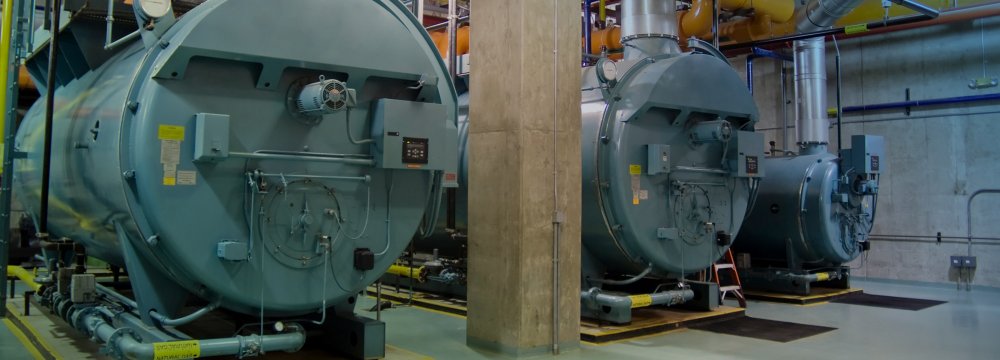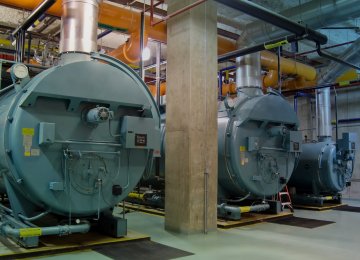In line with efforts to complete the development project of South Pars, the first boiler for Phase 13 gas refinery went on stream on Friday, the director of Phase 13 development project said.
“Operations to complete Phase 13 onshore refinery have gained momentum and the launch of the first refining train by March 2018 is high on the agenda,” Payam Motamed was also quoted as saying by Shana, the official news agency of the Oil Ministry.
According to Motamed, the refining unit, which will receive sour gas from phases 6, 7 and 8, is expected to be up and running by the end of the current Iranian year (March 20, 2018).
Boilers are one of the most fundamental systems of a refinery or chemical processing plant and one of the pieces of equipment that keep the plant up and running. The main function of a boiler is to heat water to generate steam.
Steam produced in a boiler can be used for a variety of purposes, including heating, sterilization, drying, humidification and power generation.
Pointing to steam production, the official said, "As of Friday and upon delivering natural gas as well as flare gases to Phase 13 refinery, steam generation unit became operational with the help of the installed boiler." According to the official, the produced steam will be used to power turbines for electric generating equipment, blowers and pumps.
"According to schedule, the refinery will be fully implemented by the end of the current Iranian year," he said, adding that most utility units, including nitrogen and oxygen production, water and fuel distribution, steam production and flare tripods, have already been installed.
Elaborating on the newly-installed boiler, Motamed noted that being such an integral part of refining operations makes the need for boilers to be in proper working shape a critical aspect of plant uptime. Regularly scheduled maintenance and planned refurbishment are two proactive ways to make sure boilers do not experienced prolonged or unexpected downtime.
Giving a breakdown, he said Phase 13 is being developed with 90%, 81% and 78% progress in refinery, drilling and pipe laying sections respectively.
Pipe-Laying Operations
According to the official, pipe-laying operations to connect the platform of Phase 13 to onshore facilities in the port city of Asalouyeh were completed in September.
“The 96-kilometer pipeline, connecting Phase 13 to onshore infrastructure, was an important component in Iran's efforts to boost natural gas production from the world's largest gas field it shares with Qatar,” he said.
Motamed announced that a second pipeline is expected to be laid by March next year, which will make it possible to produce 56 million cubic meters of gas per day from Phase 13.
Phase 13, one of the 24 South Pars phases whose development started in 2010, is also aimed at producing 80,000 barrels of gas condensates per day and 400 tons of sulfur as well as 1.1 million tons of liquefied petroleum gas and 1 million tons of ethane annually to provide petrochemical plants with feedstock.
South Pars is the world’s largest gas field, shared between Iran and Qatar, covering an area of 3,700 square kilometers of Iran’s territorial waters in the Persian Gulf.
In the fiscal 2016-17, gas production from South Pars increased to 520 mcm/d, up more than 150 mcm/d compared with the previous year. Iran’s total gas output is at 885 mcm/d, according to published reports.











Add new comment
Read our comment policy before posting your viewpoints